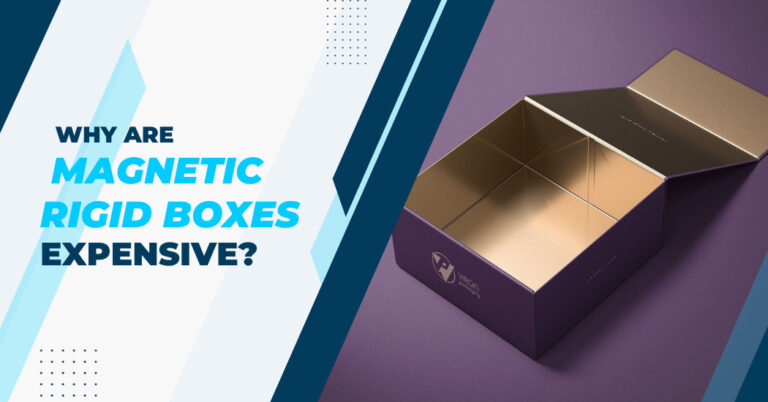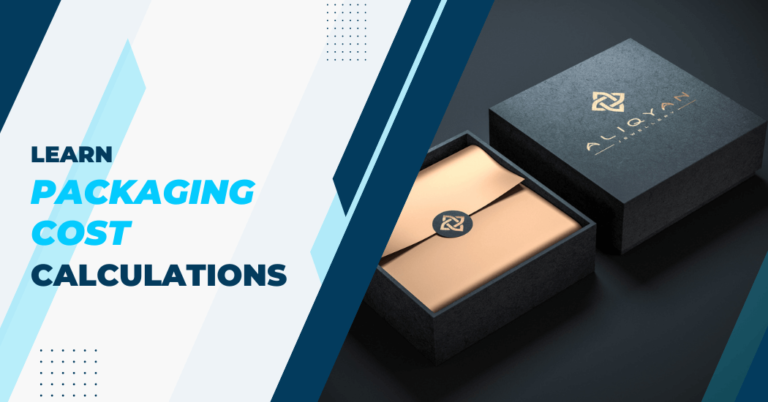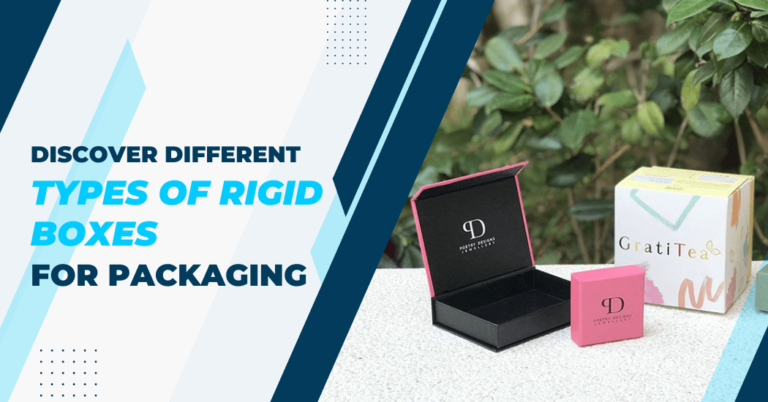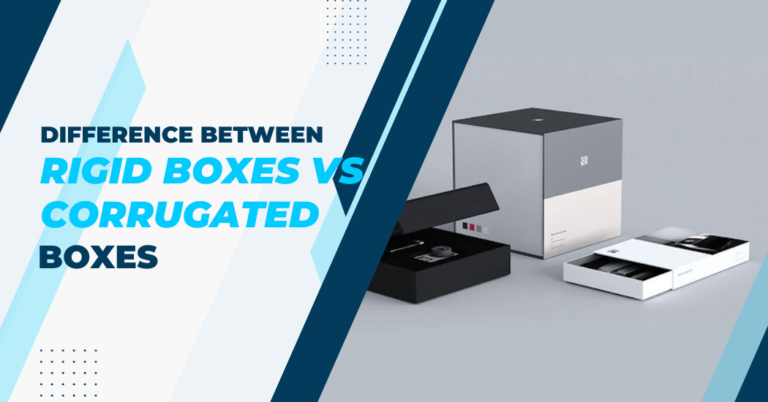How a magnetic rigid box is made?
Magnetic rigid boxes have become a popular choice for packaging due to their aesthetic appeal and functionality. These boxes are not only visually pleasing but also offer a secure and durable solution for various products.
Understanding the manufacturing process, the environmental impact and the raw materials involved in the production of magnetic rigid boxes is crucial for assessing their overall sustainability.
In this exploration, we delve into the intricacies of how magnetic rigid boxes are made, evaluate their eco-friendliness and identify the key raw materials that contribute to their construction.
Let’s unravel the craftsmanship behind these boxes and examine their environmental footprint in the quest for more sustainable packaging solutions.
Raw Materials For Rigid Boxes
In the production of magnetic rigid boxes, several raw materials are involved, each serving a specific purpose.
Some of the key raw materials used in the manufacturing process include:
- Paperboard: This is a thick and durable type of paper made from wood pulp. It is commonly used as the base material for magnetic rigid boxes due to its strength and rigidity.
- Magnet: As the name suggests, magnets are a core component of magnetic rigid boxes. They provide the characteristic snap closure of these boxes and are usually made from materials like neodymium or ferrite.
- Adhesives: These are essential for holding together different parts of the box during production. The most commonly used adhesives in magnetic rigid boxes include PVA (polyvinyl acetate) and hot melt adhesives.
- Paper Lamination: To give magnetic rigid boxes a smooth and glossy finish, paper lamination is often applied. This involves attaching a thin layer of paper onto the surface of the box using an adhesive.
- Foil Stamping: Foil stamping is used to add metallic or shiny accents to the surface of magnetic rigid boxes. This is achieved by pressing a foil onto the box using heat and pressure.
- Inks: Printing on the surface of magnetic rigid boxes is often done using inks that are specifically designed for paperboard materials. These inks are typically water-based and eco-friendly.
- Ribbons or Handles: For easier handling and transport, some magnetic rigid boxes come with ribbons or handles attached to them. These are usually made from materials like cotton, satin or grosgrain.
- Foam Inserts: To provide additional protection for fragile products, foam inserts are often included inside the magnetic rigid box. These inserts can be made from various materials such as polyurethane or expanded polystyrene foam.

Understanding the raw materials involved in making magnetic rigid boxes can help identify potential areas for improvement in terms of sustainability.
For example, companies can opt for eco-friendly adhesives or use recycled paperboard to reduce their environmental impact. So, it is essential to consider the materials used and their sourcing when assessing the overall sustainability of magnetic rigid boxes.
How a magnetic rigid box is made?
Creating a magnetic rigid box involves several steps and materials. Here is a general guide on how magnetic rigid boxes are typically made:
Materials you’ll need:
- Paperboard or Cardboard: This is the primary material for the box structure.
- Printed Paper or Fabric: Used for covering the paperboard to give it a decorative and branded appearance.
- Magnetic Sheet: This is a crucial component of the magnetic closure system.
- Adhesives: Glue is used to bond different parts of the box together.
- Cutting and Creasing Tools: Tools for cutting the paperboard into the required shapes and creating creases for folding.
- Printing Inks: If the box is to be printed with a design, inks are needed for the printing process.
Steps to make rigid box
- Design: The first step in making a magnetic rigid box is designing the structure and size of the box. This includes deciding on the dimensions, strength of the paperboard and placement of the magnet closure.
- Cutting: Once the design is finalized, the paperboard is cut into various pieces using cutting tools like die-cutters or laser cutters.
- Creasing: Creases are made on the paperboard using creasing tools. These creases will allow for easier folding and assembling of the box.
- Printing: If the box is to be branded or customized, this is when the printing process takes place using inks and printing machines.
- Adhering: Adhesives are applied to the paperboard pieces and they are then assembled to form the box structure. The magnet closure is also attached at this stage.
- Covering: To give the box a decorative appearance, printed paper or fabric is attached to the outer surface of the paperboard using adhesives.
- Attaching the magnet: The magnetic sheet is then carefully placed onto the adhesive, along with any additional reinforcements if needed. This will serve as the closure system for the box.
- Foil Stamping and Embossing: If desired, foil stamping and embossing can be done on the box at this stage for added visual appeal.
- Adding finishing touches: Any additional embellishments, such as ribbons or foam inserts, can be added at this stage to enhance the overall appearance and functionality of the box.
- Quality check: Before packaging and distribution, a quality check is done on the completed magnetic rigid boxes to ensure they meet the required standards for strength and aesthetics. Any necessary adjustments are made at this stage.
- Packaging and distribution: The final step is to carefully package the completed magnetic rigid boxes and distribute them to their intended destinations. This could be a retail store, warehouse or directly to the end customer.
Overall, the process of making a magnetic rigid box involves attention to detail, precision and skilled craftsmanship to produce high-quality, visually appealing packaging for various products.
Are magnetic rigid boxes eco-friendly?
The eco-friendliness of magnetic rigid boxes depends on various factors. While magnetic rigid boxes are typically made from materials such as paperboard or cardboard. These materials can be eco-friendly if they come from sustainable sources and are produced using environmentally responsible practices.
Look for boxes that are labeled as FSC (Forest Stewardship Council) certified, as this indicates that the paperboard used in the boxes comes from responsibly managed forests. Additionally, consider the printing and finishing processes used in the production of the boxes. Eco-friendly options may include water-based inks and environmentally-friendly coatings.
Magnetic rigid boxes can be a sustainable packaging option if they are made from recycled materials and are themselves recyclable. Check the packaging information or contact the manufacturer to determine if the boxes are recyclable and if there are any specific recycling instructions.
It’s important to note that while magnetic rigid boxes can be environmentally friendly, the overall impact also depends on factors such as transportation and disposal. Opting for packaging with minimal material usage, recyclability and sustainably sourced materials is generally a step towards more eco-friendly choices.
Factors that can affect the eco-friendliness of magnetic rigid boxes
Several factors can influence the eco-friendliness of magnetic rigid boxes:
- Material Selection: The materials used in the production of magnetic rigid boxes can significantly impact their eco-friendliness. Opting for sustainable and recycled materials can reduce the environmental impact.
- Production Process: How the box is made also plays an important role in determining its sustainability. Companies that prioritize using energy-efficient processes and minimizing waste contribute to making magnetic rigid boxes more eco-friendly.
- Adhesives: Choose adhesives that are water-based and do not contain harmful solvents. This ensures that the box can be easily recycled without causing environmental harm.
- Transportation: The mode of transportation used to distribute the boxes can also have an impact on their eco-friendliness. Choosing a shipping method that is less energy-intensive or opting for local sourcing can help reduce the carbon footprint.
- Disposal: Even if the magnetic rigid box itself is made from eco-friendly materials, improper disposal can still harm the environment. It’s essential to dispose of the boxes responsibly, such as recycling or composting, to minimize environmental impact.
- Reusability: Another factor that can affect the eco-friendliness of magnetic rigid boxes is their reusability. If the box is designed to be used multiple times, it reduces the need for new packaging and helps reduce waste.
By considering these factors, businesses and consumers can make more informed decisions about their packaging choices, potentially reducing their environmental impact.
FAQs – Rigid Box Making
Can magnetic rigid boxes be reused?
Yes, magnetic rigid boxes can be reused and this is one of the main advantages of using them. Their durable construction and aesthetic appeal make them perfect for multiple uses. After their initial use, they can serve as a decorative storage box or be reused for gifting purposes.
However, the reusability largely depends on the quality of the box and how it has been handled. Therefore, it’s recommended to handle these boxes with care to prolong their lifespan.
What is the production lead time for magnetic rigid boxes?
The production lead time for magnetic rigid boxes can vary depending on the size, complexity and quantity of the order. It typically takes between 2-4 weeks for production but can be expedited if needed.
It’s best to consult with the manufacturer or supplier for a more accurate estimate based on your specific requirements. Overall, it’s essential to plan and allow enough time for production and delivery when using magnetic rigid boxes as packaging.
What are the dimensions of a rigid box?
The dimensions of a rigid box can vary based on the product it is designed to hold. However, they are typically larger than standard folding carton boxes and have a sturdy construction that allows for added protection during transportation.
Some common sizes for magnetic rigid boxes include 8x8x4 inches, 10x10x5 inches and 12x12x6 inches. However, manufacturers can also create custom sizes to fit specific product dimensions. It’s best to consult with the manufacturer or supplier for the most suitable size for your packaging needs.
Conclusion
In conclusion, the raw materials for magnetic rigid boxes typically include sturdy cardboard or paperboard, coupled with a magnetic closure mechanism. While these materials are generally recyclable and contribute to the overall eco-friendliness of the packaging, it is essential to consider specific production processes and coatings that may impact environmental sustainability.
Overall, magnetic rigid boxes can be considered eco-friendly when produced responsibly, with an emphasis on using recyclable materials and minimizing environmental impact.
Understanding the manufacturing process sheds light on the careful balance required to create both aesthetically pleasing and environmentally conscious packaging solutions.






